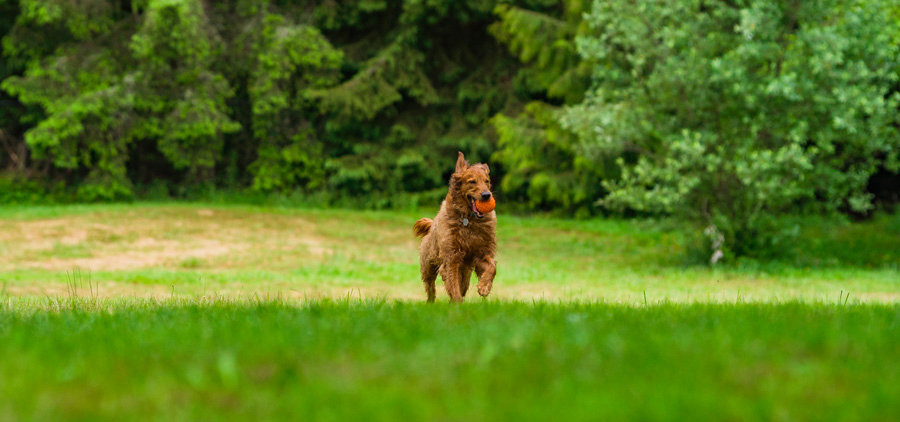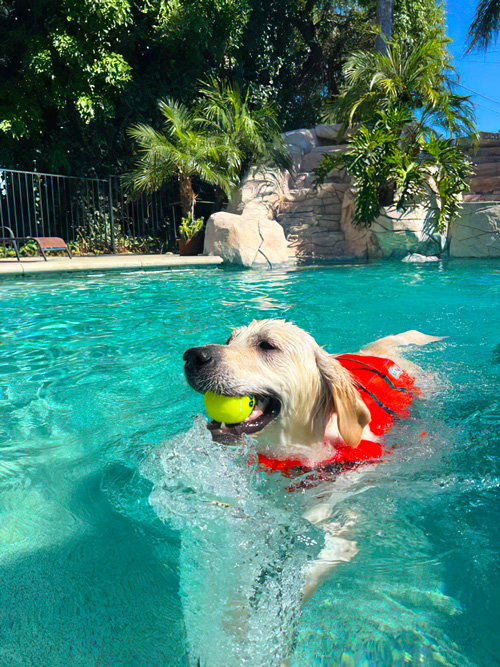How to Train Your Dog to Ignore Other Dogs (Expert Guide)

Is your dog overly enthusiastic, maybe even a little too friendly, when they see other dogs on walks? Or perhaps their reaction is fear or aggression, making outings stressful? Learning how to train your dog to ignore other dogs is key for peaceful walks. This guide offers simple, practical advice and training techniques to help your dog master polite detachment. We'll cover everything from understanding why your dog reacts to how to train your dog to ignore other dogs when walking, so you can both enjoy relaxed strolls together.
Sniffspot conducted a proprietary survey that found 66% of people with dog-reactive dogs report attempting to teach their dog to ignore other dogs. Of people that have not yet tried to teach their dog-reactive dog to ignore other dogs, 54% are confident that they would be successful while 46% are not confident that they would be successful.
If you’re in that 46 percent, this article is especially for you!
Should You Train Your Dog to Ignore Other Dogs?
Your dog being able to ignore other dogs can help keep you, them, and other pups safe. It also makes public outings easier for everyone involved (especially in crowded environments) — and it shows you respect the people and pets around you!
- Some dogs are reactive to other dogs, especially on a leash. If you come across another dog that doesn’t like yours, it’s best if your dog is able to ignore them.
- It can be frustrating and dangerous to have your dog become fixated on another dog while on a walk.
Key Takeaways
- Focus on building a strong connection with your dog. Training them to ignore other dogs really means teaching reliable focus on you, regardless of distractions. Start with a clear cue word and reward eye contact consistently.
- Practice in a variety of environments. Begin training at home, then gradually introduce your dog to new locations with increasing distractions. Safe, controlled spaces like Sniffspot parks are ideal for practicing around other dogs.
- Know when to seek professional help. If your dog's reactions are intense, involve aggression, or you're struggling to make progress, consult a certified professional dog trainer or a certified applied animal behaviorist.
What If I Want My Dog to Be Social?
Many dog parents want their dog to love other dogs and interact often. That can be a great goal depending on your lifestyle — but socialization is about far more than direct interaction.
Teaching your dog to ignore distractions (including other dogs) to focus on you instead can be a gamechanger for your relationship, behavior out in public environments, and confidence on both ends of the leash.
Safe Socialization: When & How to Introduce Your Dog
In general, by the time you’re showing your dog it’s okay to say hi or not, they should already understand and be able to ignore other dogs the majority of the time on walks.
You may be okay with your pup interacting with other dogs while on a leash at certain times. But it’s essential that, first and foremost, your dog knows to ignore the other dog first.
This means you need to determine how to let them know it is okay to socialize. There are a few ways to do this:
- If you come across a friendly dog that you are okay with them socializing with, simply stop walking and don’t give your dog the cue to look at you. (We go more into training this cue in the next sections!)
- After a few moments, most dogs will realize it is okay to socialize with this particular fellow pup. When it is time to continue the walk, give them the cue to look at you and then continue your walk.
- Alternatively, you can designate a different cue like “say hi” or “it’s okay” to let your dog know that this is a situation where they can greet. This can be a great option for pups who are good at generalizing or who benefit from extra clarity in your communication.
Remember: Not Every Dog Wants to Play!
Be respectful of other dogs and their owners. Just because you feel good about your dog socializing does not mean the other owner does. Always ask before approaching another dog and handler — if possible, from a good distance away so there isn’t any pressure on the situation.
When in doubt, pay attention to everyone’s body language (and never follow another dog-handler team if they turn away from you, cross the street, or otherwise seem like they’re trying to create distance).
Understanding Your Dog's Reactivity
Before we dive into training, it’s helpful to understand why your dog might be reacting to other dogs. Knowing the root cause can inform your training approach and help you better support your pup. Reactivity isn’t always aggression—it’s simply a response to a trigger. Let's explore some common reasons behind this behavior.
Reasons Why Dogs React to Other Dogs
Over-Excitement
Many dogs pull toward other dogs simply because they're excited and want to play! This enthusiasm can quickly turn into frustration when they're on a leash and can't reach their potential playmate. This frustration can manifest as barking, whining, lunging, or even jumping. Think of it like a toddler throwing a tantrum because they can't have the toy they want—it's not necessarily aggression, but rather an expression of their unmet desire.
Fear/Anxiety
On the other end of the spectrum, some dogs react out of fear or anxiety. This can stem from past negative experiences, like being attacked by another dog, or from a lack of proper socialization during puppyhood. A fearful dog might bark, lunge, growl, or try to hide behind you when they see another dog approaching. These behaviors are driven by a desire to protect themselves from a perceived threat. For more information on fear-based reactivity, check out this guide to fear aggression in dogs.
Frustration
Frustration is a major player in dog reactivity. Leashes can be incredibly frustrating for dogs, especially those with a strong prey drive or a desire to socialize. They feel restricted and unable to interact with other dogs naturally, leading to reactive behaviors as they try to express their frustration. This can be especially challenging in busy environments like dog parks or crowded sidewalks. Purina offers some helpful tips on training your dog to ignore other dogs, which can help manage frustration.
Inability to Communicate Naturally
Dogs rely heavily on body language to communicate with each other. Subtle cues like a slight turn of the head, a yawn, or a lip lick can convey a wealth of information. Leashes, unfortunately, disrupt this natural communication. When dogs are restrained, they can't use their full range of body language, which can lead to misunderstandings and increased tension between dogs. This can escalate into reactive displays as dogs struggle to understand each other's intentions.
Aggression
While not all reactive dogs are aggressive, aggression can be a learned behavior that develops from underlying issues like fear, frustration, or miscommunication. A truly aggressive dog might exhibit behaviors like snarling, snapping, or biting. It's crucial to address the root cause of this aggression—whether it's fear-based or possessive—to prevent further incidents and ensure the safety of both your dog and others. If you suspect your dog's reactivity stems from aggression, consulting with a certified professional dog trainer or a veterinary behaviorist is highly recommended. You can find some top dog trainers on Sniffspot.
Is Your Dog Fearful or Aggressive?
Figuring out whether your dog's reactivity is rooted in fear or aggression is key to addressing the behavior effectively. A fearful dog will often display appeasement signals like tucked tails, lowered ears, and whale eyes (showing the whites of their eyes). They might try to avoid the other dog altogether or hide behind you. An aggressive dog, on the other hand, will typically display more dominant body language like a stiff posture, raised hackles, and direct stares. They might lunge, growl, or snap at the other dog. If you're unsure how to interpret your dog's behavior, consulting with a professional can provide valuable insights and guidance.
Essential Tools for Training Your Dog to Ignore Other Dogs
Not much is required for training, but these are a few basic things to have on hand:
- Leash: We recommend avoiding retractable leashes when starting out this training.
- Plenty of treats: High-value (according to your dog) treats in a small size so you can feed a lot of them in a single session
- Time: Practicing on walks is imperative, so you will need time to take several short walks each day
- Patience and calm behavior: It’s normal to become aggravated or impatient while working on ignoring other dogs with your pup! But a calm demeanor goes a long way in keeping your dog calm and having a positive learning environment
High-Value Treats
Having incredibly delicious, high-value treats is essential for this training. You want something your dog is willing to work for, even with the distraction of other dogs. While every dog is different, some common high-value treats include cooked chicken, hot dogs, string cheese, or even small training treats if your dog is especially food-motivated. If you’re unsure what your dog considers high-value, try a few different options and see what they react to best. Cooked sausages or low-salt meats are also great options, as Purina mentions in their article How to Train Your Dog to Ignore Other Dogs: 6 Top Tips.
Keep your treats small. You’ll be giving your dog a lot of treats during a single training session, so smaller treats will help prevent them from getting full too quickly (and keep their weight in check!).
Long Leash
Using a long leash, such as a 10- to 15-foot leash, can be beneficial for this training. It allows your dog more freedom to explore and sniff while still giving you control. This can be especially helpful if you're working in an environment with other dogs, as it gives your dog some space while still allowing you to manage their interactions. A long leash gives your dog more freedom while maintaining control, a point also made by Zigzag in their guide on training your dog to ignore other dogs. If you’re looking for dog parks or open spaces to practice with a long leash, check out Sniffspot's listings to find a safe and controlled environment near you.
Avoid retractable leashes for this type of training. They can create tension and make it harder to communicate clearly with your dog. A standard flat leash is the best option for clear communication and control.
How to Train Your Dog to Ignore Other Dogs
Being around other dogs is a huge and common distraction. By training your dog to ignore other dogs, you can keep your dog from disrupting others on walks or prevent a dog fight.
In a sense, you’re not teaching your dog to ignore other dogs — you’re more accurately teaching them to pay attention to you when you request it, regardless of what is going on in the environment. It shouldn’t matter if you’re walking and passing other dogs or different distractions.
Of people that have tried to teach their dog-reactive dog to ignore other dogs, 37% report via Sniffspot’s survey that they’ve been successful.
- According to our proprietary research, the breeds with the highest success rates are:
- Australian Cattle Dog
- Labrador Retriever
- Siberian Husky
- And the breeds with the lowest success rate are:
- Australian Shepherd
- German Shepherd Dog
- Pitbull / American Staffordshire Terrier
Choosing the Right Cue Word
Sometimes referred to as command, a more positive-sounding term that means the same thing is a cue. Regardless of what you call it, you’ll want to choose your phrase and stick with it. Some familiar cues include:
- “Leave it”
- “Look at me.”
- “Watch me.”
Pick your cue phrase before you actually start training your dog. Planning ahead can help you avoid any in-the-moment confusion to make sure you stay consistent.

The "Look at That" Game
One effective method for training your dog to ignore other dogs is the "Look at That" game. This technique helps your dog learn to focus on you *and* manage their excitement around other dogs. The game works by rewarding your dog for noticing another dog and then redirecting their attention back to you.
To start, when you see another dog approaching, calmly say your cue word, such as "Look at me" or "Watch me." When your dog looks at the other dog, reward them with a high-value treat for acknowledging the distraction. Then, as soon as they look back at you, offer another treat. This reinforces the behavior you want: your dog recognizing other dogs but choosing to focus on you instead.
As noted in a guide by Purina, "The 'Look at That' Game helps calm excitement around other dogs by rewarding your dog for looking at the dog and then back at you." This method builds your dog's focus and helps them feel more secure, reducing anxiety and reactivity.
Practicing this game in various settings with different levels of distraction can significantly improve your dog's ability to ignore other dogs during walks. This approach enhances your dog's training and strengthens your bond. You can even practice in a safe, controlled environment like a Sniffspot.
By consistently playing the "Look at That" game, you can help your dog become more confident and less reactive, making walks more enjoyable for both of you.
Start Training at Home
You don’t want to immediately throw your dog into a high-energy situation and expect them to know what to do.
You want to be sure that you can gain and maintain your dog’s attention when there is zero distraction before adding others dogs into the mix.
Begin your training in your home or an enclosed private yard.
Get Your Dog’s Attention
This begins by teaching your dog a cue (sometimes referred to as a command) that indicates that they should look at you. Once your dog looks at you and is paying attention to you, you can tell them what to do next, whether to heel, sit, lay down, etc!
To teach this cue, give your dog a lot of positive reinforcement when they look at you. Try to make sure the eye contact behavior is reliable before you actually associate the action with our verbal phrase.
You can start by holding a treat up to your face. When your dog makes eye contact with you, give them lots of praise and a high-reward treat.
Continue to do this until your dog makes eye contact with you before looking at the treat.
Basic Obedience Training: A Foundation for Success
Training your dog in basic commands is essential for establishing a strong foundation for more advanced training, including teaching them to ignore other dogs. Commands such as "sit," "stay," "down," and "leave it" not only enhance your dog's obedience but also improve their focus and self-control in distracting environments. These commands create a framework that allows your dog to learn to ignore other dogs effectively, enhancing their behavior and your overall experience during walks. A strong "heel" command can also help your dog stay close, even when other dogs are around (MasterClass).
Sit
Teaching your dog to “sit” is one of the first commands you should master. It helps your dog learn to be calm and attentive, which is crucial when encountering other dogs. Start by holding a treat in front of your dog's nose and slowly move it over their head towards their tail. As their nose follows the treat, their rear end will naturally lower into a sit position. Once they sit, say "sit," give them the treat, and offer praise. Repeat this process, and your dog will eventually associate the word "sit" with the action. You can find more tips on teaching "sit" on AKC's website.
Stay
The “stay” command is vital for ensuring your dog remains in place when you need them to focus on you rather than other distractions. This command can be particularly useful in crowded areas where other dogs may be present. After your dog sits, hold your hand up in a "stop" gesture and say "stay." Initially, only ask for a short stay, gradually increasing the duration as your dog improves. Reward them with a treat and praise for remaining in place. The ASPCA offers helpful advice on teaching "stay" effectively.
Down
Teaching your dog to lie down can help them relax and reduce excitement when they see other dogs. This command can be a calming signal for your dog, allowing them to refocus on you. With your dog in a sit, hold a treat near their nose and lower it to the ground. As they follow the treat, their body will naturally lower into a down position. Once they are down, say "down," give them the treat, and offer praise. Consistent practice will solidify this command. For visual learners, this video tutorial demonstrates the "down" command effectively.
Leave It
The “leave it” command is essential for preventing your dog from engaging with other dogs or distractions. It teaches them to ignore things they might want to approach, which is crucial for maintaining control during walks. Place a treat in your open hand and present it to your dog. When they try to take it, close your hand and say "leave it." Once they stop trying to get the treat, offer them a different treat from your other hand and praise. This teaches them that ignoring the initial offering leads to a reward. Practice "leave it" with various distractions, gradually increasing the difficulty. As highlighted by Sniffspot, teaching your dog a cue that indicates they should look at you is a key part of training them to ignore other dogs. For more in-depth training tips, check out this article from VCA Animal Hospitals.
Introducing Your Cue Word
After this point, you can now add in a cue phrase. You can choose whatever you like, but always be consistent and say the phrase as you hold the treat up while giving positive reinforcement when they make eye contact.
Continue practicing this until your dog looks at you without needing the treat.
Mastering Loose-Leash Walking
Before moving on to high-energy and high-traffic environments, you need to make sure your dog can walk politely on a leash.
To do this, say your cue phrase while walking on a leash. Keep a tight leash (with no slack) so your dog is next to you. Carry a bag of treats and give one to them every few minutes as you continue walking.
If your dog starts getting distracted, repeat the cue phrase. Once they turn and make eye contact, give them a treat and plenty of praise.
Practice this on every single walk. Eventually, your dog should walk next to you politely and look toward you during walks without treats.
Heel Training
Once your dog understands the cue word and looks at you consistently, you can start incorporating the “heel” command. A strong “heel” redirects your dog’s attention back to you when they see another dog, diffusing potential reactivity. As mentioned in this Reddit discussion on dog training, rewarding your dog for staying in the heel position, especially when there's tension on the leash, reinforces this positive behavior.
Start practicing “heel” in a low-distraction environment like your home. With your dog on a leash by your side, use your chosen cue word (like “look” or “watch me”) to get their attention. As they make eye contact, say “heel” and begin walking. Reward them with a treat and praise for walking by your side. Gradually increase the duration of the heeling, rewarding them frequently for maintaining the position.
Addressing Pulling and Whining
Pulling and whining are common frustrations during walks, especially when other dogs are present. The key is to consistently reinforce loose-leash walking, starting in distraction-free areas and gradually adding distractions, as suggested by Zigzag’s training guide. If your dog starts to pull or whine, stop walking immediately. Use your cue word to regain their attention. Once they focus on you, reward them and resume walking. This teaches them that pulling and whining get them nowhere, while focusing on you earns rewards. For more tips on loose-leash walking and managing reactivity, check out Sniffspot's guide on dog reactivity.
Remember, patience is key. Maintaining a calm demeanor creates a positive learning environment for your dog. Consistent practice and positive reinforcement will eventually lead to more relaxed and enjoyable walks for both of you, even around other dogs. You can even find the perfect place to practice on Sniffspot—check out our dog parks near you!
Troubleshooting Leash Training Challenges
If your dog pulls hard on the leash, it could hurt itself. This puts a lot of pressure on their neck, and many may feel the need to buy tools such as prong collars, but this can lead to even further injury.
Instead, you may want to try a harness. Harnesses no longer hurt your dog, and they’re difficult for your dog to escape from. However, some dogs pull even harder with them.
In these cases, you may consider a harness that clips in two locations and will require the use of a double-ended leash. This harness and leash combination gives you much more control over them and doesn’t hurt them in the process.
Practice Makes Perfect: Vary Your Training Locations
Once your dog looks at you after you use your cue phrase and without needing a treat, you can then move on to practicing in different environments and with distractions.
Start by taking your dog on walks in different locations. Go on various routes, so the distractions are frequently new and different.
Try practicing in these places:
- Walks where there are lots of dogs. This can be either places you know other people walk their dogs or areas where you know there are lots of dogs in yards that are distracting.
- Walks where there are other animals. Practicing in parks or trails with other animal distractions such as rabbits or squirrels is a great idea.
- Walks where there are a lot of people. Take your dog on walks in urban areas or spots with lots of people.

Distance Management: A Gradual Approach
Start training in a controlled environment where your dog can see other dogs but isn’t immediately tempted to approach them. A great option for this is a Sniffspot, where you can find safe, private spaces for your pup to practice. As your dog becomes more comfortable, slowly move them closer to other dogs, rewarding them for staying calm and focused on you. This gradual approach builds confidence and reinforces the desired behavior, as explained in this MasterClass article on dog training.
Remember, patience is key. Some dogs may take longer to adjust than others. Don’t rush the process, and always prioritize your dog’s comfort level. If they show signs of stress or anxiety, increase the distance between them and the other dogs.
Existence Socialization: Desensitization Without Interaction
This focuses on getting the dog used to being around other dogs without actively interacting. The idea is to desensitize the dog to the presence of other dogs, reducing the urge to greet them. Existence socialization can be particularly helpful for dogs who are reactive or overly excited around other dogs, as discussed in this helpful Reddit thread.
Find a spot where your dog can observe other dogs from a safe distance. It could be a park bench, a quiet corner of a dog park, or even your own backyard if you have a fence. Reward your dog for calm behavior while they observe the other dogs. Over time, they'll begin to associate the presence of other dogs with positive experiences, leading to a decrease in reactivity and an increase in their ability to ignore distractions. If you're looking for a safe and controlled environment for existence socialization, consider booking a private Sniffspot.
Advanced Training Techniques
Once your dog understands the basics, you can start incorporating more advanced techniques to solidify their ability to ignore other dogs. These strategies build upon the foundation you've already established, helping your dog develop greater focus and impulse control.
Mat Work: Building Focus and Impulse Control
Mat work is a fantastic way to teach your dog to settle and focus, even with distractions present. Start by teaching your dog to “go to their mat” and stay there. Reward them heavily for staying put, initially in a quiet environment. As they get the hang of it, gradually introduce mild distractions, eventually working your way up to having other dogs nearby. This method, discussed on Reddit, is excellent for building focus and self-control. You can even use this technique at a Sniffspot! Start with a private fenced area where you can control the environment and gradually introduce other dogs at a distance.
Proximity Games: Encouraging Closeness
Playing proximity games strengthens your bond with your dog and encourages them to focus on you. Games like "find it," where you toss treats on the ground and your dog searches for them while staying relatively close, can be highly effective. These games, recommended by Zigzag, teach your dog to look to you for guidance and reward, making it easier for them to ignore other dogs when you're out and about.
Controlled Interactions and Release Cue: "Go Play"
Once your dog reliably ignores other dogs, you can introduce controlled playdates with friendly, well-socialized dogs. Using a release cue like "go play" gives your dog clear permission to interact, reinforcing the idea that they should only engage with other dogs when you say it's okay. This method, suggested by Purina, helps maintain control and prevents unwanted interactions.
Positive Interrupters: Redirecting Attention
A positive interrupter is a distinct sound or cue that redirects your dog's attention away from another dog. This could be a clicker, a specific word, or even a kissy sound. When you see your dog fixating on another dog, use the interrupter to break their focus and then reward them for looking at you. This technique, discussed in various online dog forums, is particularly helpful for managing reactivity and preventing escalation.
Luring and Redirection
Luring and redirection is a simple yet effective method for managing distractions. Keep high-value treats on hand and use them to lure your dog away from other dogs. If they start to pull or fixate, use a treat and your cue word to redirect their attention back to you. This technique, also recommended by Zigzag, helps them learn to disengage from the distraction and focus on you instead.
Expert Trainer Review
We want to make sure we only provide the highest quality information to our community. We have all of our articles reviewed by qualified force free trainers.
This is the trainer that reviewed this article:
Rayanne Spence CPDT-KA, IAABC-ADT
Professional Dog Trainer – Animal Medical Center of Hattiesburg
When to Seek Professional Help
It’s important to recognize that you can’t solve all dog reactivity issues with DIY training. Sometimes, you need professional guidance for the safety and well-being of your dog and others. If your dog's reactivity is severe, involves aggression, or you're simply struggling to make progress, consider consulting a certified professional dog trainer or a certified applied animal behaviorist. They can assess your dog's specific needs and develop a tailored training plan.
Here are some signs that it might be time to seek professional help:
- Severe Reactivity: If your dog's reactions are intense, such as lunging, snapping, or excessive barking, it’s crucial to seek professional guidance. As Purina points out, professional help is especially important when aggression is involved.
- Struggling to Make Progress: Even with dedicated effort, you might find yourself hitting a wall with your training. If you're feeling overwhelmed or unsure of how to proceed, don’t hesitate to reach out to a professional. As suggested in this Reddit discussion, consulting a trainer can provide valuable support and insights.
- Signs of Aggression or Extreme Fear: Aggression toward other dogs, or extreme fear and anxiety in their presence, requires expert intervention. Zigzag emphasizes the importance of professional help in these situations.
- Difficulty Focusing: If your dog struggles to focus on you in the presence of other dogs, even with high-value treats and consistent cues, a professional trainer can help you develop more effective strategies. MasterClass highlights this as a key indicator that professional training might be beneficial.
- Overly Reactive or Aggressive Behavior: If your dog's reactivity escalates or they display aggressive behaviors, seeking guidance from a qualified trainer is essential for managing their behavior and ensuring safety. Your Dog's Friend offers resources and advice on dealing with reactive dogs. Finding safe spaces for your dog to de-stress and enjoy themselves is also important. Sniffspot offers a variety of private dog parks that can provide a controlled environment for reactive dogs.
Remember, seeking professional help is a sign of responsible dog ownership. A qualified trainer can provide personalized guidance and support to help you and your dog achieve your training goals and create a positive and safe environment for everyone. You can find a directory of certified professional dog trainers through the Certification Council for Professional Dog Trainers (CCPDT).
Sniffspot Survey Data
Sniffspot Research 2023, n = 4,092

Find the Perfect Space for Training on Sniffspot
As you progress through these training steps, remember the importance of a controlled environment. As we mention in our article on how to train your dog to ignore other dogs, controlled environments are essential for effective training. They allow your dog to learn without overwhelming distractions. That's where Sniffspot comes in. Starting your training at home, as recommended here, is a great first step. But to truly solidify the "ignore" cue, you'll need to practice in a variety of locations with different levels of distraction.
Sniffspot offers thousands of private dog parks across the country, providing the perfect setting for focused training sessions. These parks offer a safe, enclosed space where you can work with your dog without the unpredictable encounters and distractions of public dog parks. This controlled environment allows you to introduce distractions gradually, at your dog's pace. Whether you're working on basic obedience or addressing reactivity, a private Sniffspot park gives you the space and peace of mind to focus on your training goals.
Once your dog is reliably responding to your cue at home, a Sniffspot park can be the ideal next step. As discussed in our article on training your dog, practicing in various locations is key for long-term success. You can even find Sniffspots with specific features to challenge your dog, like water parks for added distractions or trails for practicing loose-leash walking. By using Sniffspot, you can create positive training experiences that build your dog's confidence and strengthen your bond. And who knows, you might even discover some new favorite places to explore with your furry friend!
Related Articles
Frequently Asked Questions
Q: My dog is friendly and loves other dogs. Why should I train them to ignore other dogs? Even if your dog is social, teaching them to ignore distractions—including other dogs—is a valuable skill. It strengthens your bond, improves their focus, and makes public outings much smoother. It also allows you to choose when and with whom your dog interacts, ensuring safer and more respectful socialization.
Q: What if my dog gets frustrated when they can't greet other dogs? Frustration is normal, especially at the beginning. Use high-value treats and positive reinforcement to make focusing on you more rewarding than fixating on other dogs. Start training in a low-distraction environment and gradually increase the difficulty. If your dog pulls or whines, stop, regain their attention with your cue, and reward them when they look at you.
Q: My dog pulls hard on the leash, even with a harness. What should I do? A harness that clips in two locations (front and back) used with a double-ended leash can provide better control without causing harm. This setup gives you more leverage and helps redirect their pulling. Consistent training and positive reinforcement are still key, even with specialized equipment.
Q: How can I practice "ignoring" in a safe and controlled environment? Sniffspot offers private dog parks that are perfect for practicing this skill. These enclosed spaces allow you to introduce distractions gradually, at your dog's pace, without the unpredictability of public dog parks. You can even find Sniffspots with specific features, like water parks or trails, to add more challenges as your dog progresses.
Q: When should I consider seeking professional help for my dog's reactivity? If your dog's reactivity is severe (lunging, snapping, or excessive barking), involves aggression, or you're not seeing progress with training, it's time to consult a certified professional dog trainer or a certified applied animal behaviorist. They can assess your dog's individual needs and create a tailored training plan.
Most recent articles
Related articles
Top dog guides per area
Dog training guides

Dog Food Aggression: Why You Shouldn't Punish It
Does your dog ever growl when you walk by their food dish? Maybe they get possessive of treats, carrying them far away and giving you side-eye when you start to approach — or snarling at your other pets or children if they get too close.

Best Dog Fields in the US: 25+ Wide-Open Spaces for Your Pup to Run Free
The best dog fields in the US offer something that traditional enclosed parks simply can't match: acres of open space where your pup can truly stretch their legs and run at full speed. From Colorado's 470-acre prairie meadows to Tennessee's award-winning "Outback," these wide-open spaces allow dogs to roam, explore, and exercise naturally while engaging instincts that cramped urban parks suppress.

The Ultimate Guide to Scent Training for Dogs
Your dog's nose is an amazing tool. Did you know they have 40 times the olfactory receptors than humans? Scent training for dogs taps into this superpower, turning everyday moments into exciting sniff-fests. It's enriching for all types of dogs – reactive, shy, or simply adventurous. Ready to explore the world of scent work for dogs? Let's get started.

Service Dog Training Costs: DIY vs. Pro
More than 80 million Americans rely on their service dogs to help them navigate the world. Task-trained assistance animals perform a huge range of life-changing—in many cases, life-saving—services: These dogs act as eyes for visually impaired handlers, provide mobility support, alert to seizures and blood sugar crashes, interrupt anxiety attacks, remind their people to take medications, and so much more.

How to Deal With Puppy Potty Training Regression
You thought those dreaded middle-of-the-night potty breaks were over. You were finally free from cleaning up puppy puddles. Then, suddenly, your furry friend starts having accidents again. It's frustrating, right? This puppy potty training regression is more common than you think. Don't worry; we'll help you get your pup back on track. We'll cover the common causes, offer practical solutions, and give you actionable steps to tackle this challenge together.

Dirty Dog Syndrome: Causes, Solutions, and Prevention
It's a cringe-worthy moment every dog owner dreads: your furry friend chowing down on something truly disgusting. If your dog has a penchant for poop, you're dealing with coprophagia. It's more common than you think, and thankfully, often manageable. This article explores the reasons behind dirty dog syndrome, from instinct to learned behavior. We'll also give you practical tips to help break this unpleasant habit.

How to Train Your Rescue Dog: A Complete Guide
* All Sniffspot articles are reviewed by certified trainers for quality, please see bottom of article for details *
Dog enrichment guides

Best Dog Water Parks in the US: 15+ Amazing Splash Destinations for Your Pup
Do you have a water-loving dog looking to burn some energy? There are countless dog parks to visit throughout our country — but some of them become far too hot in the midday sun to be safe for your pets to play. That’s why we’ve put together a list of some of the best dog water parks throughout the United States! At these locations, your pup can frolic, splash, and swim to their heart’s content.

Best Dog Fields in the US: 25+ Wide-Open Spaces for Your Pup to Run Free
The best dog fields in the US offer something that traditional enclosed parks simply can't match: acres of open space where your pup can truly stretch their legs and run at full speed. From Colorado's 470-acre prairie meadows to Tennessee's award-winning "Outback," these wide-open spaces allow dogs to roam, explore, and exercise naturally while engaging instincts that cramped urban parks suppress.

Best Toys for Herding Dogs: Keeping Your Pup Happy & Engaged
Herding dogs are amazing, intelligent companions. But that also means they need more than just a simple game of fetch. Finding the right toys for herding dogs is key to keeping them happy and stimulated. This article explores some of the best toys for herding dogs, including options specifically for breeds like Border Collies and Australian Shepherds. We'll help you discover the perfect herding toys for dogs to tap into their natural instincts and keep them entertained for hours.

Tough Dog Toys for Aggressive Chewers: A Practical Guide
Does your dog destroy every toy you give them? Is your house littered with the remnants of plush toys? Are you tired of wasting money on "indestructible" dog toys for aggressive chewers that don't last? Then this post is for you. We'll cover everything you need to know about finding the best dog toys for aggressive chewers, so you can finally give your pup something safe, durable, and fun.

Daily Exercise Calculator: How Much Exercise Does Your Dog Need?
Everyone knows dogs need exercise, but how much is enough? Walks are great, but creating a truly balanced fitness plan means understanding your dog's specific needs. This post helps you develop a daily exercise calculator for your dog, considering breed, age, and lifestyle. We'll cover fun activities, understanding exercise intensity, and recognizing when your pup has had enough. Let's create a plan that keeps your dog happy and healthy!

Complete Guide To Herding With Dogs
* All Sniffspot articles are reviewed by certified trainers for quality, please see bottom of article for details *

Dog Enrichment Activities: The Ultimate Guide
Ever feel like your dog is restless or bored? They may be getting enough exercise, but still need more. That's where enrichment activities for dogs come in. Giving your dog opportunities to sniff, explore, and problem-solve can make a world of difference. Whether you have a puppy, adult, or senior dog, enriching their environment is key for their well-being. Let's explore how to add cognitive enrichment for dogs, even tailoring activities to your dog's breed with breed specific enrichment and fun enrichment games for dogs.
Dog reactivity guides

Rottweiler Aggression: Truth vs. Myth
Many dogs have gotten a bad reputation over the years for being "dangerous breeds." Rottweilers are among them. Like pit bulls and other large, blocky-headed types of dogs, these powerful and beautiful animals are often assumed to be aggressive.

Best Dog Fields in the US: 25+ Wide-Open Spaces for Your Pup to Run Free
The best dog fields in the US offer something that traditional enclosed parks simply can't match: acres of open space where your pup can truly stretch their legs and run at full speed. From Colorado's 470-acre prairie meadows to Tennessee's award-winning "Outback," these wide-open spaces allow dogs to roam, explore, and exercise naturally while engaging instincts that cramped urban parks suppress.

What Is a Reactive Dog? A Practical Guide for Owners
Does your dog suddenly transform into a barking, lunging Tasmanian devil on walks? It's stressful for both of you. If this sounds familiar, you might have a reactive dog. Understanding what is a reactive dog is the first step to calmer walks. We'll explore the common triggers and give you actionable strategies to manage and modify this behavior. Let's turn those stressful walks into enjoyable outings.

How to Socialize a Reactive Dog: A Step-by-Step Guide
Does your dog display reactivity to other pets or people? Maybe they’re a new rescue pup and are still settling into your home. Or they were sick growing up, so you missed their critical socialization period. Possibly they’ve had a bad experience after being raised as a normal puppy.

What Is a Reactive Dog? A Complete Guide
Is your dog overly excited or fearful around other dogs? Do they bark, lunge, or whine? You might have a reactive dog. Many dog owners face this challenge. Understanding what a reactive dog is is the first step to helping them. This guide explores the common causes of dog reactivity, explains what makes a dog reactive, and offers practical tips and resources. Let's work together to build a stronger bond with your dog and enjoy stress-free walks.

9 Best Online Communities for Reactive Dog Parents
Does your dog's reactivity make walks stressful? You're not alone. Many dog owners face similar challenges. This guide offers practical advice and support for managing reactivity, including finding the best online dog training for reactive dogs. We'll connect you with reactive dog support groups, share training tips, and explore resources like the best dog training app for reactive dogs. Let's build a stronger bond with your dog, together.
* All Sniffspot articles are reviewed by certified trainers for quality, please see bottom of article for details *
How To Groom a Reactive Dog
* All Sniffspot articles are reviewed by certified trainers for quality, please see bottom of article for details *
Sniffspot community guides

The State of Public Dog Parks Across the United States
From 2009 to 2020, there was a 40 percent increase in the development of public dog parks. Designated spots for canine exercise have become commonplace in every major city in North America — many pet owners won’t even consider renting an apartment that doesn’t have its own fenced-in pet area for their canine companions.

Best Dog Fields in the US: 25+ Wide-Open Spaces for Your Pup to Run Free
The best dog fields in the US offer something that traditional enclosed parks simply can't match: acres of open space where your pup can truly stretch their legs and run at full speed. From Colorado's 470-acre prairie meadows to Tennessee's award-winning "Outback," these wide-open spaces allow dogs to roam, explore, and exercise naturally while engaging instincts that cramped urban parks suppress.

How This Family is Affording Their Dream Property Through Renting it Hourly to Dogs
Thousand Oaks, California has been a safe haven for Sniffspot host, Jen, since childhood. Having grown up in busy Santa Barbara, Jen, an introvert from an early age, would seek out solitude and serenity away from tourists attractions and droves of people visiting from elsewhere. “My grandparents own 60 acres about a 30 minute drive from here, and I grew up spending every summer and every holiday visiting them on the ranch,” Jen explained. “In Santa Barbara, we wouldn't go to the beach on the weekend because that's where everybody was, so you'd find places off the beaten path where the tourists weren't. For me, the ranch was just my happy place.”

Host Tips: Ellen K. What Makes Sniffspot Successful for Me
Ellen is the host of Country Pasture Getaway, one of Sniffspot's most popular sniff spots. She has taken the time to write up the lessons she has learned about how to be a great sniff spot host.

How this Oregon Farmer is Making a Business From Renting Her Land to Dogs
Just 20 minutes outside of the busy city of Portland, Oregon, and settled right on the banks of the Columbia River, you’ll find what countless visitors have flocked to the area in search of – mountain views, crisp, clean air, and running water for miles. What you might not expect to find, however, is a hidden oasis designed just for dogs and their people, owned and operated by a farming couple and enjoyed by visitors on two legs, and four.

Host Tips: Fran T. Providing Great Guest Service at our Spot
Fran is the host of Ranch Setting, one of Sniffspot's most popular spots. She has taken the time to write up the lessons she has learned about how to be a great Sniffspot host.

How Sniffspot Helped a Nervous Rescue Work Through His Fears and Change His Family’s Life
This is the story of a family and dog rescuing each other.
Top dog trainers in the US
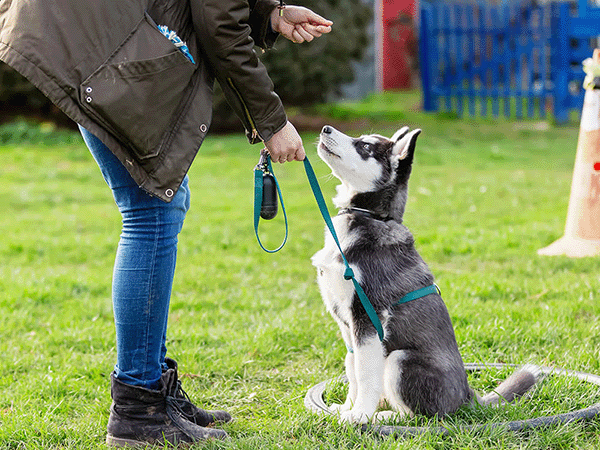
The Best Dog Trainers in the United States of 2025
This is a list of the top dog trainers in the United States, based on votes from the Sniffspot community and the general public.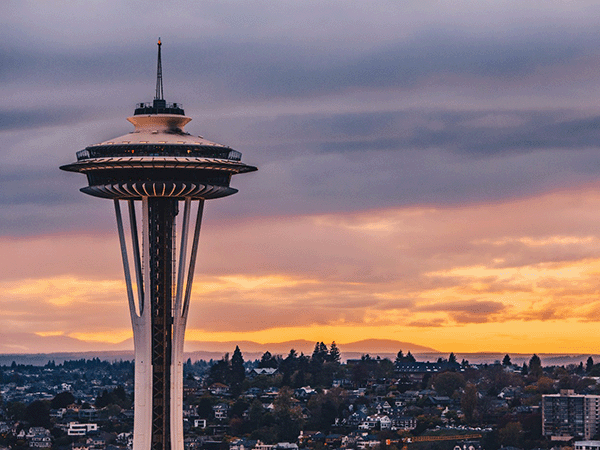
The Best Dog Trainers in Seattle, WA of 2025
This is a list of the top dog trainers in Seattle, WA, based on votes from the Sniffspot community and the general public.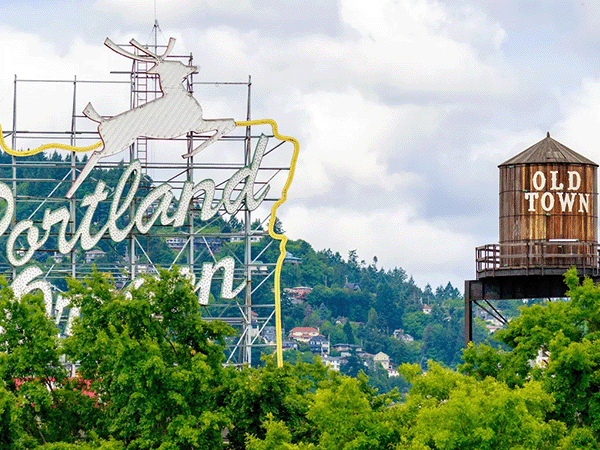
The Best Dog Trainers in Portland, OR of 2025
This is a list of the top dog trainers in Portland, OR, based on votes from the Sniffspot community and the general public.
The Best Dog Trainers in Los Angeles, CA of 2025
This is a list of the top dog trainers in Los Angeles, CA, based on votes from the Sniffspot community and the general public.
The Best Dog Trainers in New York, NY of 2025
This is a list of the top dog trainers in New York, NY, based on votes from the Sniffspot community and the general public.
City dog parks guides

Top 10 Indoor Dog Parks: A US Guide
Looking for a space to play with your dog no matter what the weather’s like outside? Look no further than our list of the best indoor dog parks in the United States! These climate-controlled spaces are growing in popularity as pet ownership increases throughout the country. As a bonus, many of them also offer dog training, boarding, grooming, or daycare services on the premises.

Best Dog Fields in the US: 25+ Wide-Open Spaces for Your Pup to Run Free
The best dog fields in the US offer something that traditional enclosed parks simply can't match: acres of open space where your pup can truly stretch their legs and run at full speed. From Colorado's 470-acre prairie meadows to Tennessee's award-winning "Outback," these wide-open spaces allow dogs to roam, explore, and exercise naturally while engaging instincts that cramped urban parks suppress.

Best Dog Parks in the US: Ultimate Guide to Public & Private Off-Leash Adventures
Is your pup giving you those pleading "let me run free" eyes? Whether you're a new dog parent or a seasoned pro looking for fresh adventures, finding the perfect off-leash paradise for your furry friend can feel ruff! From sun-soaked California beaches where your water-loving lab can make a splash to mountain trails in Vermont where your adventure buddy can chase every scent, we've sniffed out the 15 best dog parks across America.

Dog Parks Near Me: Las Vegas Edition
Looking for the perfect dog park near me in Las Vegas? You're in luck! This guide explores all the best options for your pup, from public dog parks to private dog parks near me on Sniffspot. We'll help you find the ideal spot for playtime, socializing, and fresh air. Plus, we'll cover essential etiquette and safety tips to ensure a happy visit for everyone. Get ready for some tail-wagging fun!

Top Sniffspot Locations: Find the Perfect Dog Park
Looking for the perfect dog park? Whether you need a wide-open public space or a private, fenced-in spot, this guide will help you find the best dog parks across the US. We'll cover top-rated public parks, the perks of private dog parks, and even explore Sniffspot locations – giving your pup a safe and fun place to play. Ready to find your dog's new favorite spot? Let's go!

Sniffspot: Portland's Best Private Dog Parks
Ready to discover Portland's best dog parks? Whether you're looking for a public park or the unique experience of a private Sniffspot, this guide has you covered. We'll help you find the perfect spot for your pup, with tips on what to bring, how to prepare, and even understanding dog body language. Plus, we'll explore some top Portland dog parks, including public and Sniffspot options, so you can plan your next dog-friendly adventure in the City of Roses.
Portland Dog Parks: Public & Private Options
This page is about public city dog parks and also includes Sniffspot private dog parks. Sniffspot is the largest network of private dog parks for rent in the world!
Small Dog Park Guide: Tips for Finding the Perfect Spot
Finding the perfect dog park for your small breed can be ruff! Big dog parks can be overwhelming, even dangerous, for little pups. This comprehensive guide helps you sniff out the best small dog parks for your pint-sized companion, covering everything from essential safety checklists to top recommendations for small dog parks across the US—including both public spots and private dog parks.
Dogs breeds

German Shepherd Dogs: Insights From Real Dog Owners
The German Shepherd Dog (GSDs) are known for their intelligence, loyalty, and striking appearance. They're also incredibly versatile, excelling as working dogs and devoted family companions. This guide covers everything you need to know about GSDs, from understanding their unique traits and rich history to practical advice on training and care. So, whether you're a seasoned GSD owner or just starting your research, let's explore this remarkable breed together.

Best Dog Fields in the US: 25+ Wide-Open Spaces for Your Pup to Run Free
The best dog fields in the US offer something that traditional enclosed parks simply can't match: acres of open space where your pup can truly stretch their legs and run at full speed. From Colorado's 470-acre prairie meadows to Tennessee's award-winning "Outback," these wide-open spaces allow dogs to roam, explore, and exercise naturally while engaging instincts that cramped urban parks suppress.

Labrador Retriever: Ultimate Guide by Owners
Discover the Labrador Retriever, a breed celebrated for its playful nature, affectionate temperament, and trainability. Labradors are known for their friendly demeanor and adaptability, making them perfect family companions and versatile working dogs. As one of the most popular types of retrievers, Labs are ideal companions for various lifestyles and are recognized by the American Kennel Club (AKC) as an excellent breed for families.

Golden Retriever Advice: The Complete Owner's Guide
Golden Retrievers: they're gorgeous, playful, and incredibly popular. But before you welcome one into your home, you need the right golden retriever advice. This guide draws on the wisdom of nearly 10,000 Golden Retriever owners, offering practical tips for caring for these affectionate dogs. From understanding their high energy levels to mastering grooming and training, we'll cover everything you need to know. So whether you're already a devoted Golden parent or just starting your research, get ready to learn how to give your furry friend the best possible care.

American Staffordshire Terrier: Your Complete Guide
Think American Staffordshire Terriers are tough? Think again. While their muscular build might intimidate some, these dogs are known for their playful and loyal personalities. This guide draws on the experience of nearly 10,000 AmStaff owners to reveal the truth about this often misunderstood breed. Want to learn more about caring for an American Staffordshire Terrier? You're in the right place.

Australian Shepherd Facts: Breed Info & Care Guide
Discover the Australian Shepherd, an AKC breed celebrated for its trainable, playful, and affectionate nature. Despite its name, the Australian Shepherd is actually a native breed to the United States, originally developed to breed on farms and ranches. Considered a medium dog, Australian Shepherds were bred for herding beginning in the 1950s. As one of the high-energy breeds, Aussies are known for their boundless energy and need for regular exercise, including aerobic exercise.

Essential Husky Facts for Owners: Breed Guide
Discover the Siberian Husky, a breed celebrated for its curious, intelligent, and loyal nature. Considered a medium-sized dog, Siberian Huskies were originally bred in Russia for sledding, beginning in the early 20th Century. Today, they're one of the most popular active breeds in North America.










